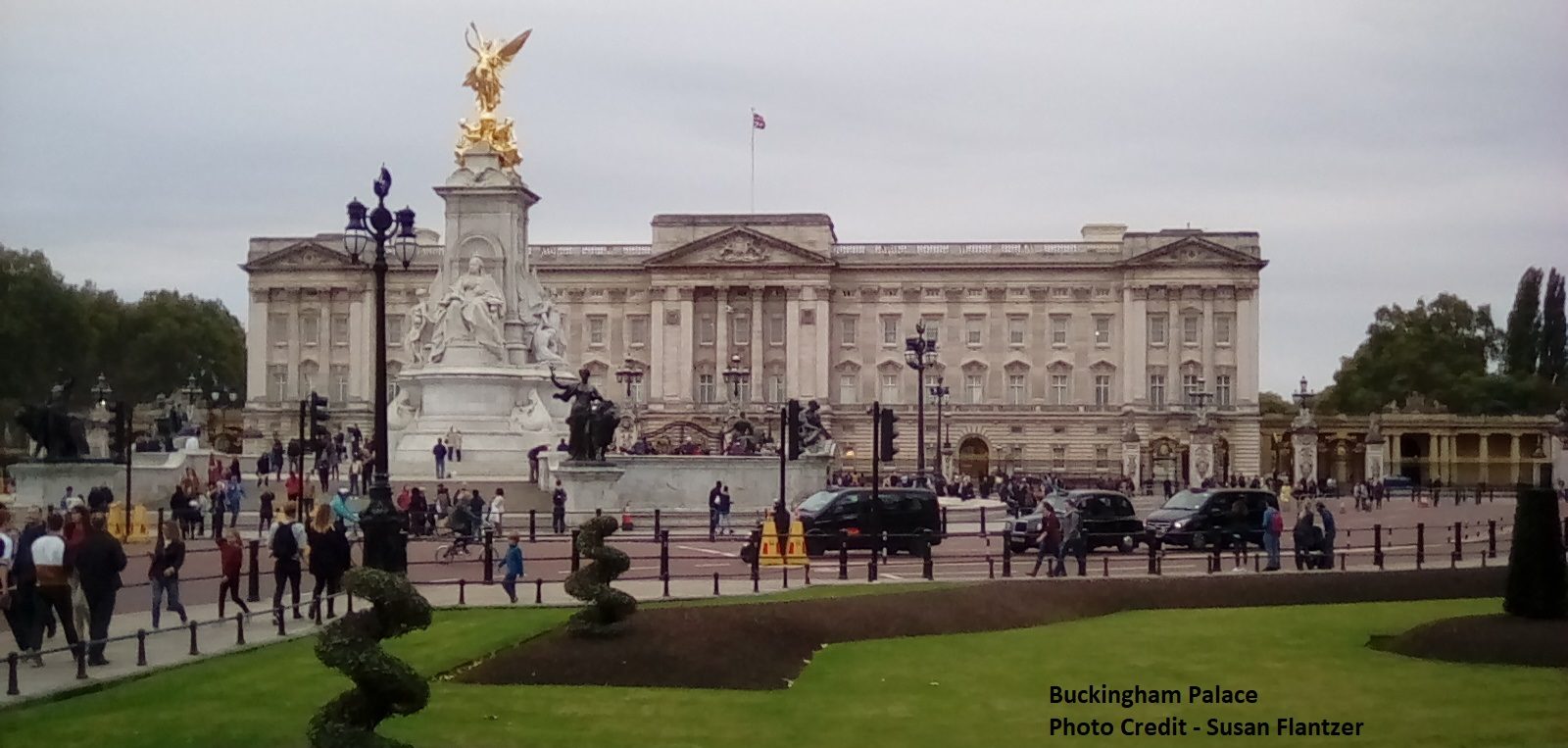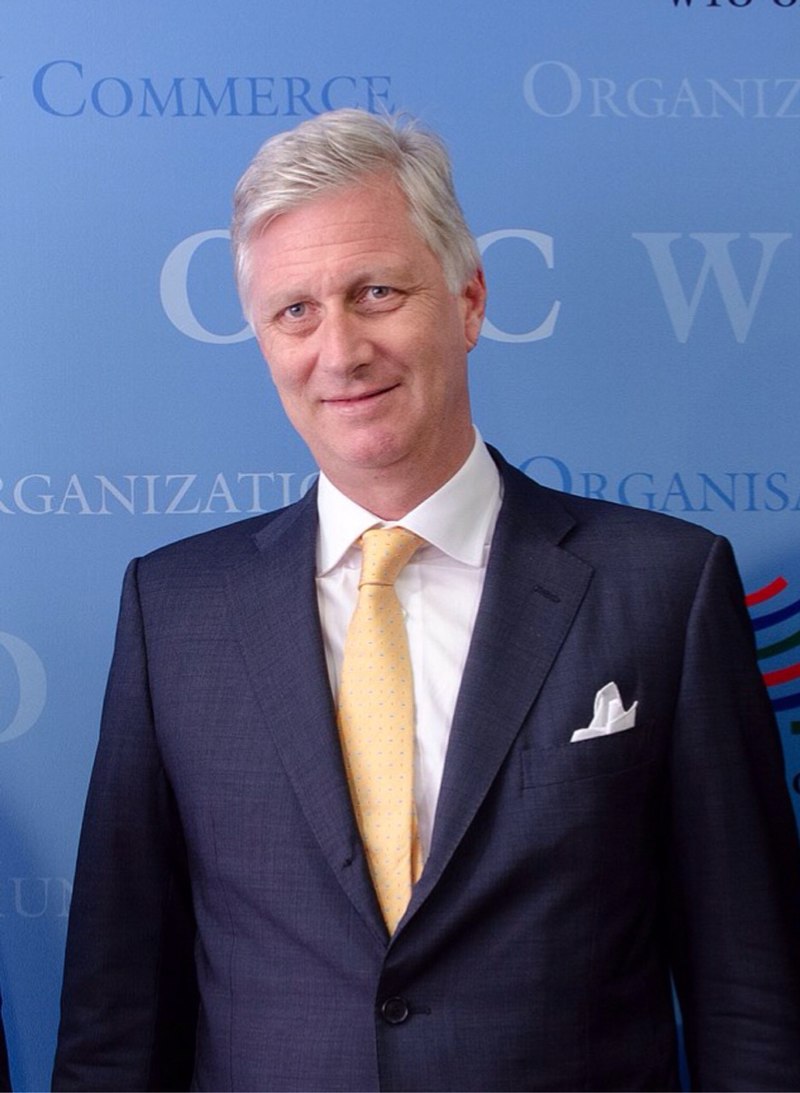by Susan Flantzer
© Unofficial Royalty 2025

Leopold I, the first King of the Belgians, formerly Prince Leopold of Saxe-Coburg and Gotha; Credit – Wikipedia
In August 1830, the southern provinces (modern-day Belgium) of the Netherlands rebelled against Dutch rule. International powers meeting in London agreed to support the independence of Belgium, although the Dutch refused to recognize the new country. On April 22, 1831, the National Congress of Belgium asked Prince Leopold of Saxe-Coburg and Gotha, the uncle of both Queen Victoria and her husband Prince Albert, if he wanted to be King of the Belgians. Leopold swore allegiance to the new Belgian constitution on July 21, 1831, and became Leopold I, the first King of the Belgians. Under the Belgian Constitution, the Belgian monarch is styled “King/Queen of the Belgians” to reflect that the monarch is “of the Belgian people.”
Since the first King of the Belgians was Prince Leopold of Saxe-Coburg and Gotha (1790 – 1865), the Belgian Royal Family’s family name originally was Saxe-Coburg-Gotha. Because of World War I and anti-German sentiment, the family name was changed in 1920 to van België, de Belgique, or von Belgien (“of Belgium”) in the country’s three official languages, Dutch, French, and German. In a 2015 royal decree, Philippe, King of the Belgians decreed that in the future, the title of Prince or Princess of Belgium would be restricted to the children and grandchildren of the monarch. Other family members would bear the title Prince or Princess of Saxe-Coburg. More information is in the Prince and Princess of Belgium section below.
Members of the Belgian Royal Family are often known by two names: a French name and a Dutch name. For example, the current monarch is called ‘Philippe’ in French and ‘Filip’ in Dutch and the fifth King of the Belgians was ‘Baudouin’ in French and ‘Boudewijn’ in Dutch.
- Unofficial Royalty Kingdom of Belgium Index
- Unofficial Royalty: Line of Succession to the Belgian Throne
The Belgian Monarch

King Philippe, the current King of the Belgians; Credit – Wikipedia
The title of the Belgian monarch is “King/Queen of the Belgians” not “King/Queen of Belgium” as is the practice for other European monarchies. “King/Queen of the Belgians emphasizes the bond and connection to the people of Belgium rather than the land the Kingdom of Belgium controls. His Majesty Philippe, King of the Belgians is the current King of the Belgians. Philippe ascended to the Belgian throne on July 21, 2013, upon the abdication of his father King Albert II of Belgium. After the abdication, it was decided that the former king would be styled His Majesty King Albert II of Belgium, the same style his father King Leopold III of Belgium used after his abdication.
Since 1831, there have been seven Kings of the Belgians. Until 1991, the Salic Law, which prohibits female succession, was in effect. The succession law was changed in 1991 to Absolute Cognatic Primogeniture. The succession passes to the eldest child of the sovereign regardless of gender, males and females have equal succession rights. Princess Elisabeth, The Duchess of Brabant, the eldest child of King Philippe, is the heir to the throne and will be Belgium’s first Sovereign Queen of the Belgians.
The Belgian Royal Consort

Queen Mathilde, the current Queen of the Belgians; Credit – Wikipedia
Her Majesty Queen Mathilde of the Belgians, born Mathilde d’Udekem d’Acoz, is the current royal consort. All Belgian monarchs so far have been male, so there have only been female consorts. The wives of Belgian monarchs have all been titled Queen of the Belgians and styled Her Majesty, except for King Leopold III‘s second wife, born Mary Lilian Baels in London, England, and known as Lilian.
Lilian’s marriage to King Leopold III was controversial. In September 1941, Leopold married Lilian Baels, in a religious ceremony held in the chapel of the Palace of Laeken. The couple planned to hold a civil ceremony after World War II but instead held it in December 1941, after discovering they were expecting a child. Several issues with the marriage further damaged Leopold’s reputation with the Belgian people. First, the order of the ceremonies went against Belgian law, which states that a civil ceremony must occur before a religious one. Secondly, and perhaps most impactful, was the fact that Leopold remarried at all. The Belgian people loved the late Queen Astrid, born a Princess of Sweden, who died at the age of twenty-nine in a car accident in a car driven by her husband Leopold. Lilian was perceived as a “social climber”. Following the marriage, Lilian was given the title Princess de Réthy and was not styled as Queen. It was also decided that any children would be Prince and Princess of Belgium but without any rights of succession.
The Heir to the Belgian Throne – Duke or Duchess of Brabant

Princess Elisabeth, the current Duchess of Brabant; Credit – Wikipedia
Her Royal Highness Princess Elisabeth, The Duchess of Brabant, the eldest child of King Philippe of the Belgians, is the current heir to the Belgian throne and holds the title Duchess of Brabant. Originally, the Duke of Brabant ruled the Duchy of Brabant. The title was created in 1183 by Holy Roman Emperor Frederick Barbarossa for Henri I, a member of the House of Reginar and the first Duke of Brabant from 1183 until he died in 1235. The Duchy of Brabant consisted of the three modern-day Belgian provinces of Flemish Brabant, Walloon Brabant, and Antwerp, the Brussels-Capital Region, and most of the present-day Dutch province of North Brabant.
The Royal Decree of December 16, 1840 designated the title Duke of Brabant to the heir apparent to the Belgian throne. The title Duke of Brabant was first granted in the Kingdom of Belgium in 1840, to Prince Leopold (the future Leopold II, King of the Belgians), the second but the eldest surviving son of Leopold I, the first King of the Belgians.
The Royal Decree of December 16, 1840 was amended in 2001 to account for male and female equal succession rights. The 2001 amendment states: “The title of Duke of Brabant or Duchess of Brabant will be held, in the future, by the Prince or the Princess, the eldest son or eldest daughter of the Sovereign, and, if lacking, by the eldest son or eldest daughter of the eldest son or daughter of the Sovereign.” The eldest child of the Belgian Sovereign automatically becomes The Duke or Duchess of Brabant when his/her parent becomes the Belgian Sovereign. There is no ceremony or formal oath. The Duke or Duchess of Brabant takes precedence over the other Princes and Princesses of Belgium.
Prince and Princess of Belgium
The four children of Philippe, King of the Belgians: Princess Elisabeth, Duchess of Brabant (in the pink dress) with her siblings Princess Eleonore, Prince Gabriel, and Prince Emmanuel of Belgium
Since 1891, three Royal Decrees have been issued defining who would bear the titles Prince of Belgium and Princess of Belgium, who hold the style His/Her Royal Highness.
The Royal Decree of March 14, 1891, issued during the reign of Leopold II, King of the Belgians, bestowed the titles Prince of Belgium and Princess of Belgium to all who descended in a direct male line from Leopold I, King of the Belgians, and to those women who married a Prince of Belgium.
The Royal Decree of December 2, 1991, issued during the reign of the childless Baudouin, King of the Belgians, amended the 1891 Royal Decree, additionally bestowing the titles Prince of Belgium and Princess of Belgium to direct male and female descendants of Baudouin’s brother and successor, the future Albert II, King of the Belgians.
The Royal Decree of November 12, 2015, issued during the reign of Philippe, King of the Belgians abolished the Royal Decree of 1991. All members of the Belgian royal family, by birth or by marriage, who held the title Prince of Belgium or Princess of Belgium, would keep their titles. However, in the future, the titles Prince of Belgium and Princess of Belgium will be bestowed upon only the children and grandchildren of the reigning monarch and the children and grandchildren of the heir apparent, The Duke of Brabant or The Duchess of Brabant. The spouses of a Prince of Belgium or Princess of Belgium are no longer automatically granted the title of Prince of Belgium or Princess of Belgium. However, the Belgian Sovereign retains the power with the government’s agreement, to bestow the title Prince of Belgium and Princess of Belgium on an individual basis. This will allow the spouses of the Belgian Sovereign’s children to become Princes or Princesses of Belgium.
The children and grandchildren of Princess Elisabeth, Duchess of Brabant, the eldest child of Philippe, King of the Belgians, and the heir to the Belgian throne, will be Princes and Princesses of Belgium. However, only the children of Elisabeth’s siblings Prince Gabriel, Prince Emmanuel, and Princess Eléonore, who will be the grandchildren of Philippe, King of the Belgians, will have the title Prince of Belgium or Princess of Belgium. The grandchildren of King Philippe’s siblings Princess Astrid and Prince Laurent will not be grandchildren of a Belgian Sovereign and will not have the titles Prince and Princesse of Belgium. Instead, they will have the titles Prince of Saxe-Coburg and Princess of Saxe-Coburg.
Works Cited
- Clevers, Antoine. (2015). Le Roi limite l’octroi du titre de “prince de Belgique.” La Libre.be. https://www.lalibre.be/belgique/2015/11/25/le-roi-limite-loctroi-du-titre-de-prince-de-belgique-OAJD4QP75FBDTPQU5BH6ZHBQQM/
- Monarchy of Belgium. (2023). Wikipedia. https://en.wikipedia.org/wiki/Monarchy_of_Belgium
- The Belgian Monarchy. (n.d.). The Belgian Monarchy. https://www.monarchie.be/en
- Wikipedia Contributors. (2025). Duke of Brabant. Wikipedia; Wikimedia Foundation.
This article is the intellectual property of Unofficial Royalty and is NOT TO BE COPIED, EDITED, OR POSTED IN ANY FORM ON ANOTHER WEBSITE under any circumstances. It is permissible to use a link that directs to Unofficial Royalty.




































